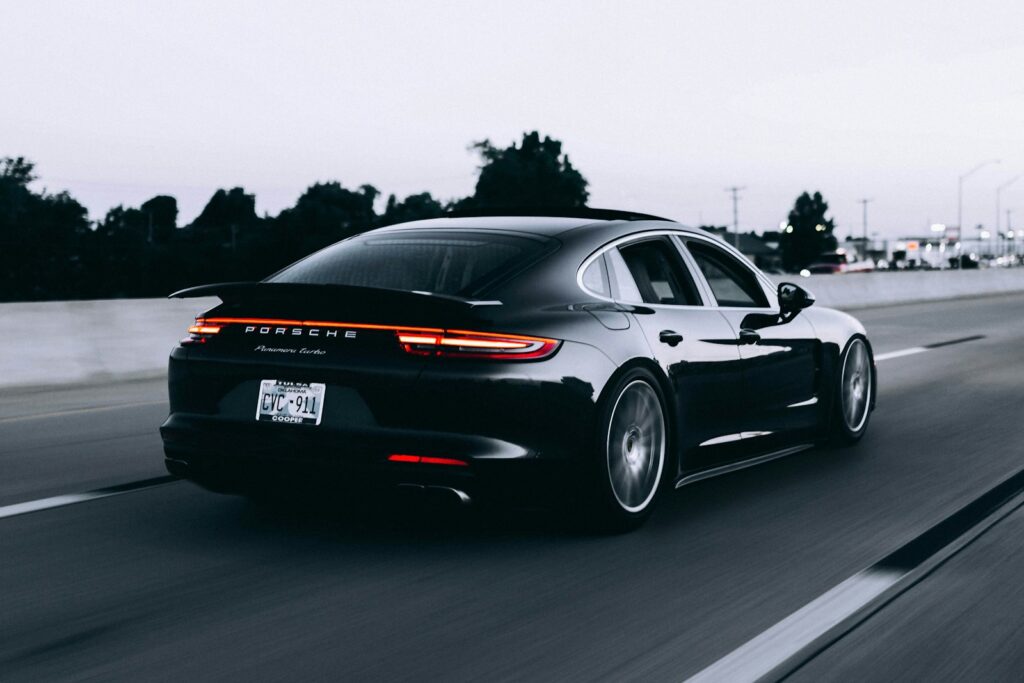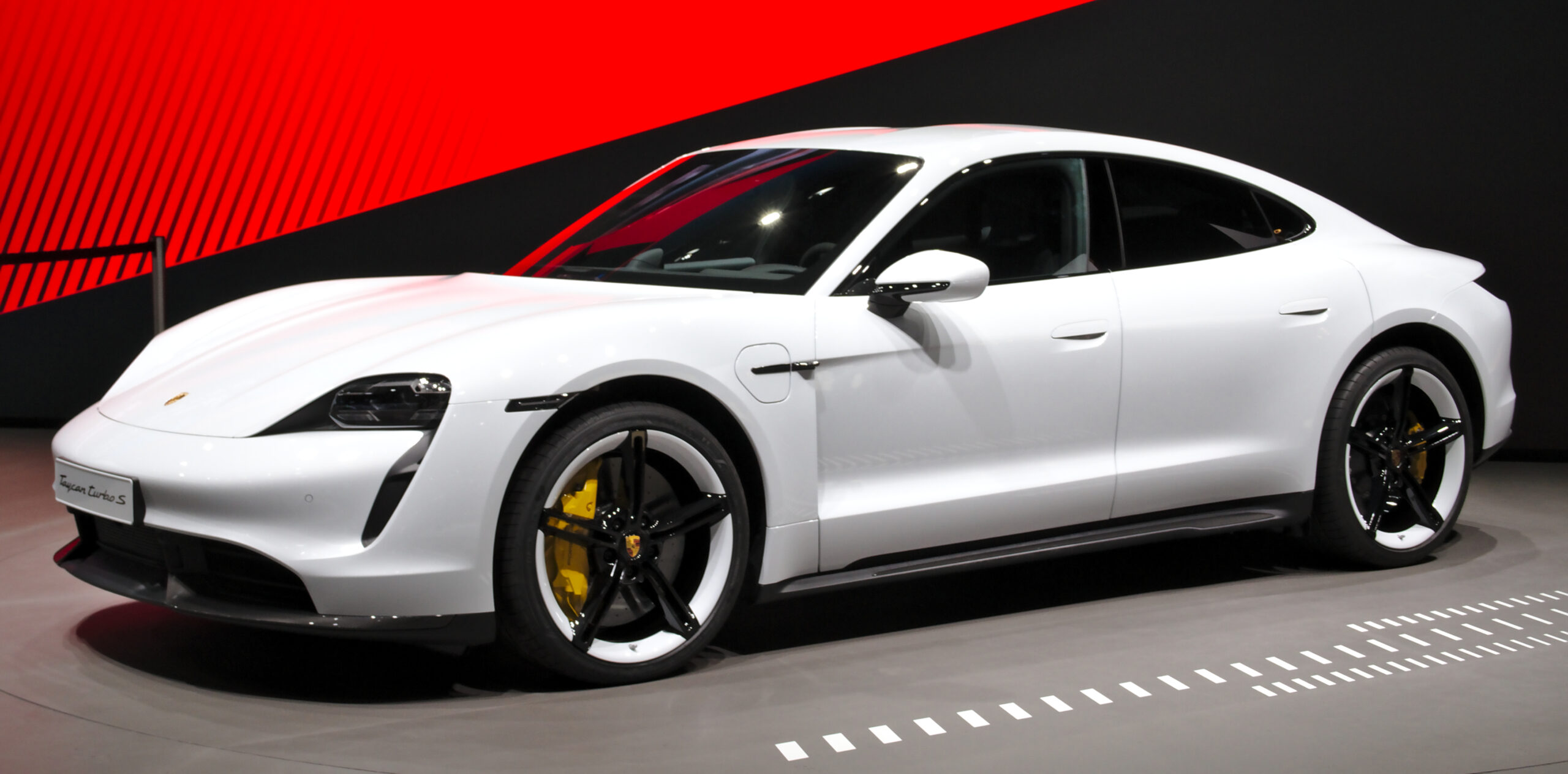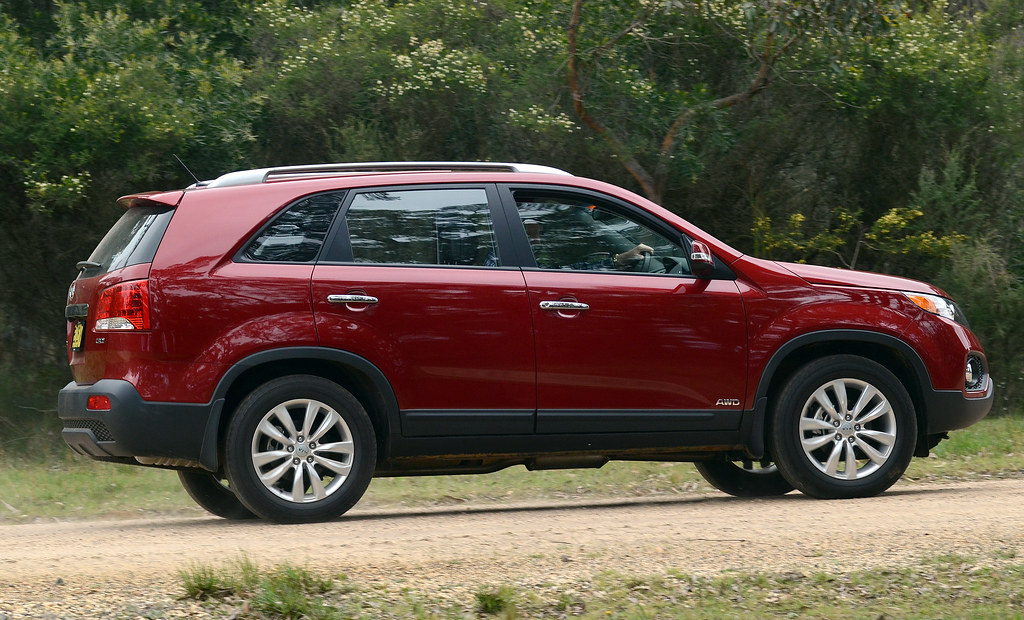
While electric vehicles (EVs) often capture the headlines, a quieter, yet profoundly significant, shift is occurring in the automotive landscape: more and more drivers are enthusiastically switching to hybrids. The automotive industry is consistently delivering high-quality options for gas-electric transportation, and the sheer variety of choices available to consumers today is simply unprecedented.
This isn’t just anecdotal observation; data from S&P Global Mobility indicates that hybrids and plug-in hybrids (PHEVs) have accounted for over 10 percent of the car market in recent months. This surge reflects a growing consumer understanding of the practical, economic, and environmental advantages these vehicles offer, making them an increasingly preferred choice for a diverse range of drivers seeking a balanced solution.
From significant savings at the pump to contributing to a cleaner environment without the anxieties sometimes associated with full electrification, hybrids present a compelling case. This comprehensive exploration will delve into the primary reasons why hybrids are not just a trend but a foundational step forward in personal transportation, grounded in data, practicality, and consumer-focused benefits.

1. **Lower Fuel Costs & Superior Fuel Efficiency**One of the most immediate and impactful reasons drivers are flocking to hybrid vehicles is the undeniable advantage in fuel economy, translating directly into significant savings at the gas pump. Hybrids are engineered to get better gas mileage than comparable vehicles equipped with nonhybrid powertrains, a benefit that resonates strongly with budget-conscious consumers facing fluctuating fuel prices.
Consider the 2024 Hyundai Sonata. Its nonhybrid variant returns up to 29 mpg combined, while the hybrid version impressively achieves 47 mpg. The Environmental Protection Agency (EPA) estimates that the most efficient gas engine for the nonhybrid Sonata incurs yearly fuel costs of $1,800. In stark contrast, the Sonata Hybrid boasts an annual fuel cost of $1,100, representing a substantial savings of $700 over its conventional counterpart.
The economic benefits become even more pronounced with larger vehicles like SUVs or minivans. The 2024 Chrysler Pacifica, for instance, with its nonhybrid powertrain, offers up to 22 mpg combined, leading to annual fuel costs of $2,350. However, its plug-in hybrid (PHEV) variant, the Pacifica Hybrid, can travel up to 32 miles on electric power alone and has a yearly fuel cost of just $1,250—a remarkable savings of $1,100 compared to the nonhybrid version.
This superior fuel efficiency is not limited to a few models. Toyota’s popular hybrids, including the Prius, Corolla, Highlander, RAV4, and Camry, consistently achieve EPA-estimated combined ratings ranging from 40 to 57 mpg. The iconic Toyota Prius, for example, is noted for achieving an EPA-estimated 56 MPG in city driving, dramatically reducing the need for constant refueling and reinforcing the practical, everyday value of hybrid ownership.
Read more about: Expert Insights: Luxury Cars You’ll Regret Buying Due to Hidden Costs and Reliability Issues
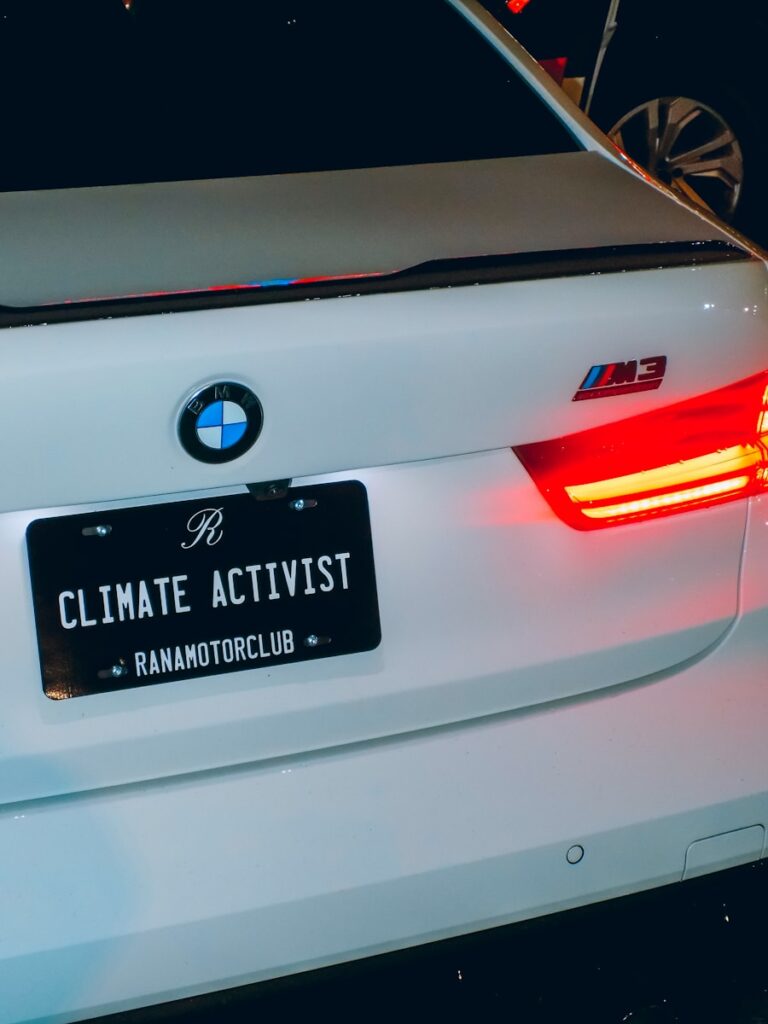
2. **Reduced Emissions & Immediate Environmental Impact**Beyond the financial incentives, a significant number of drivers are switching to hybrids due to a heightened awareness of environmental impact and personal health. Internal combustion engine (ICE) vehicles are known to emit air pollutants that contribute to smog and haze, which can lead to a range of health issues, as highlighted by the National Institute of Environmental Health Sciences (NIH).
According to the NIH, short-term exposure to high air pollution is linked to conditions such as asthma, reduced lung function, and cardiac problems. Furthermore, long-term exposure has been associated with more severe health concerns, including cancer, heart disease, respiratory disease, and disorders affecting the neurological and immune systems. These are serious considerations for any driver concerned about their well-being and that of their community.
In addition to local air pollutants, traditional combustion engines also release greenhouse gases like methane and carbon dioxide, which are primary contributors to climate change. Hybrids offer a tangible solution to these concerns by producing demonstrably lower tailpipe emissions than their nonhybrid counterparts. They serve as an excellent choice for drivers who prioritize the health implications of emissions and their broader impact on the global environment.
The positive ecological benefits are not merely theoretical; a typical hybrid vehicle can reduce emissions by up to 35% compared to a standard gas-powered car. Moreover, plug-in hybrids (PHEVs), when operating in their all-electric mode, achieve zero tailpipe emissions. This means that if a PHEV is primarily used for short, daily commutes within its electric range, it can deliver mostly emission-free performance, offering a direct and immediate environmental advantage to eco-conscious drivers.
Read more about: Decode Your Dashboard: The Real Reasons Your Car’s Check Engine Light Turns On and How to Fix Them
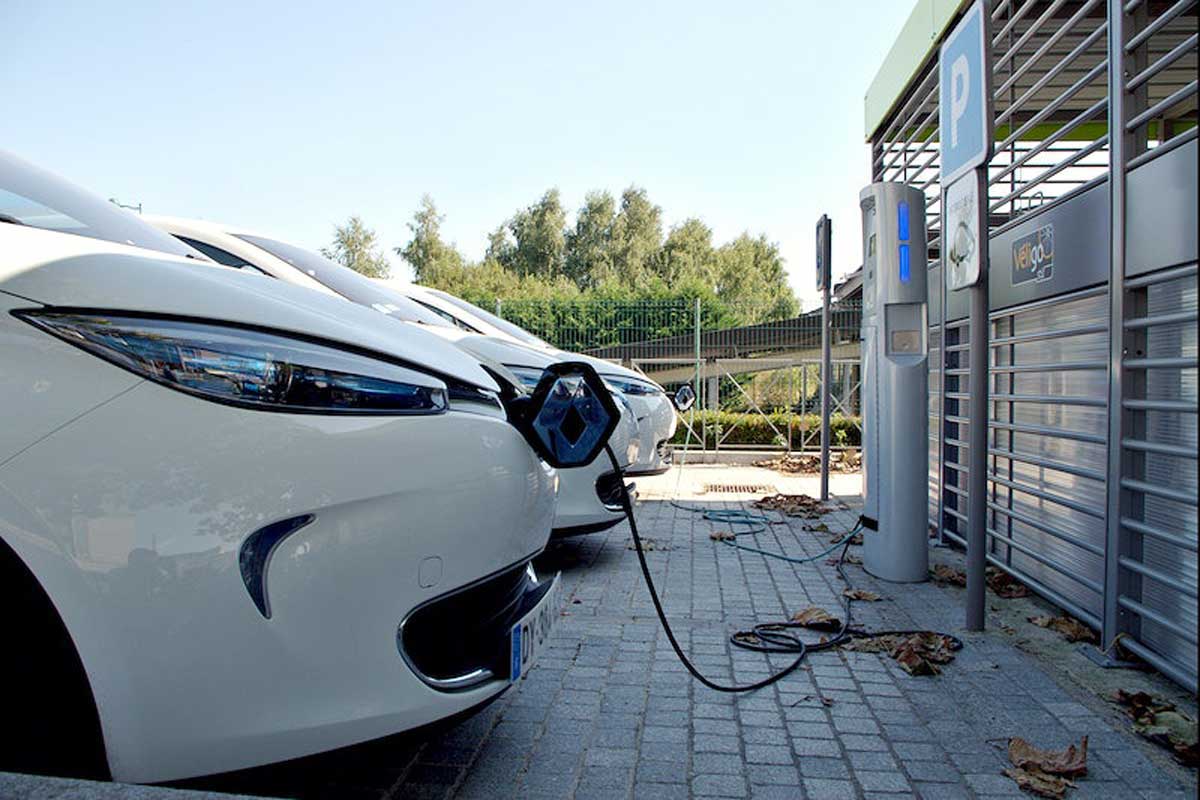
3. **Refueling Flexibility & No Range Anxiety**For many consumers, one of the most compelling arguments for choosing a hybrid over a purely electric vehicle (EV) is the unparalleled refueling flexibility and the complete absence of range anxiety. Unlike fully electric vehicles, hybrids do not require extensive planning for charging stops or reliance on a developing charging infrastructure that may be inconsistent or unavailable in certain areas.
This blend of power sources means that hybrid vehicles offer unmatched convenience for travelers and everyday commuters alike. Drivers can quickly refuel at any conventional gas station, eliminating the need to search for specific charging points or endure the extended stops that electric vehicles typically require for a full charge. This provides invaluable peace of mind, especially for long-distance journeys, road trips, or travel in regions with limited EV charging facilities.
At the DC Auto Show, Steve Bond articulated this concern perfectly when considering an EV for the future, stating, “But not yet.” When asked why, he cited road trips and the “availability of charging stations, or I should say lack of.” This sentiment reflects a common apprehension that hybrids effectively neutralize by always having a gasoline engine as a reliable backup.
Whether it’s a standard hybrid seamlessly switching between its gas engine and electric motor, or a plug-in hybrid that offers a significant all-electric range with the gasoline engine as a safety net, drivers can trust that they will always have power. This hybrid design extends total driving range and ensures that travel remains hassle-free, allowing drivers to focus on their journey rather than worrying about the next charge.
Read more about: Conquer the Open Road: 13 Hybrid Vehicles Delivering Over 600 Miles of Range for Unmatched Freedom
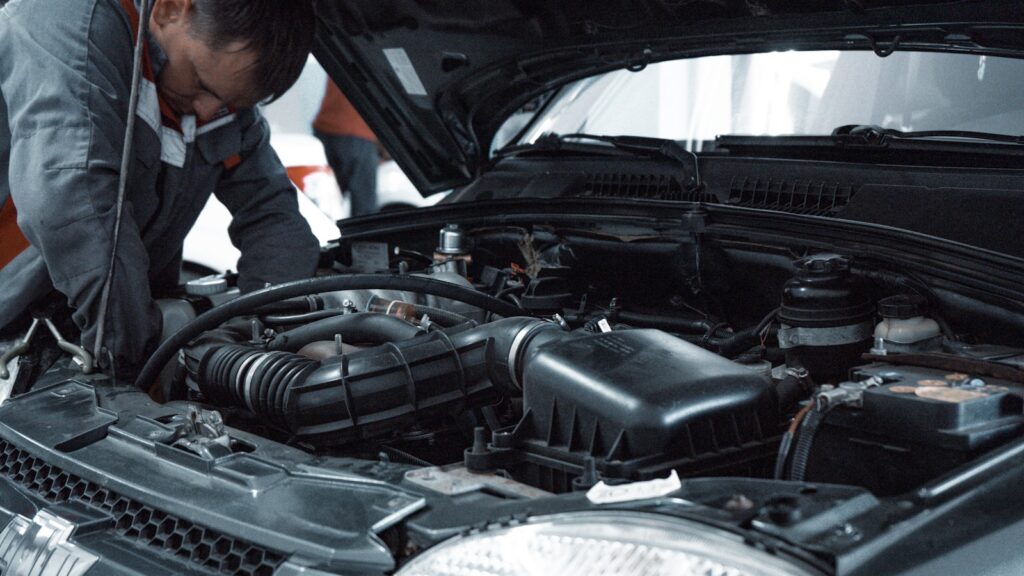
4. **Reduced Maintenance Costs**Another significant advantage that is drawing drivers to hybrid vehicles is their tendency to incur lower maintenance costs compared to nonhybrid cars. While a hybrid’s maintenance expenses are not as minimal as those of a pure EV, gas-electric hybrids generally require less upkeep than their traditional gasoline-powered counterparts, presenting a practical long-term financial benefit for owners.
Although routine maintenance items such as oil changes are still necessary for hybrids, the design of these vehicles means that the electric motor shares some of the propulsion load. This division of labor reduces the strain on the internal combustion engine, which can lead to less frequent needs for certain types of maintenance over the vehicle’s lifespan. The partnership between the gas engine and electric motor optimizes performance and durability, contributing to reduced wear and tear on key components.
An excellent example of this cost-saving dynamic can be observed in the braking system. Hybrids are equipped with regenerative braking, a technology that converts the vehicle’s forward momentum into electric power to recharge the battery when slowing down. This process significantly reduces the reliance on the traditional friction brakes.
As a result of regenerative braking, there is considerably less wear on the vehicle’s conventional brake pads and rotors over time. This translates directly into less frequent brake replacements and, consequently, lower expenses for drivers. Most hybrids, therefore, require standard oil changes and generally minimal unique repairs, making ownership a more hassle-free and economical experience.
Read more about: Decode Your Dashboard: The Real Reasons Your Car’s Check Engine Light Turns On and How to Fix Them

5. **Government Incentives & Tax Credits**The financial appeal of hybrid vehicles is further enhanced by various government incentives and support programs, particularly for plug-in hybrid electric vehicles (PHEVs). While standard hybrids are not typically eligible for federal tax breaks, choosing a PHEV can unlock substantial financial benefits, making the transition to electrified driving even more attractive.
Some PHEVs are eligible for federal tax credits that can range from $3,750 to $7,500, offering a significant reduction in the overall cost of ownership. For the year 2024, specific models that qualify for these credits include the Chrysler Pacifica PHEV, Ford Escape Plug-In Hybrid, Jeep Grand Cherokee 4xe, Jeep Wrangler 4xe, and Lincoln Corsair Grand Touring, demonstrating a diverse range of options for potential buyers.
Looking ahead to 2025, plug-in hybrids continue to qualify for federal tax credits, with eligibility for up to $3,750. While fully electric vehicles may receive up to $7,500, the landscape of incentives is dynamic. Reports indicate that the Trump administration plans to end all federal EV/PHEV credits soon, creating a degree of uncertainty for future buyers and making the current window for PHEV incentives particularly valuable.
Beyond federal programs, many states offer their own additional perks to hybrid owners. These can include advantages such as access to high-occupancy vehicle (HOV) lanes, allowing for faster commutes, and reduced vehicle registration fees. These combined federal and state incentives collectively make hybrid, and especially plug-in hybrid, ownership a more economical and appealing choice for a growing number of drivers.
Read more about: Elon Musk’s $1 Billion Bet: How a CEO’s Bold Stock Purchase Erased Tesla’s 2025 Losses and Ignited a Bullish Revival
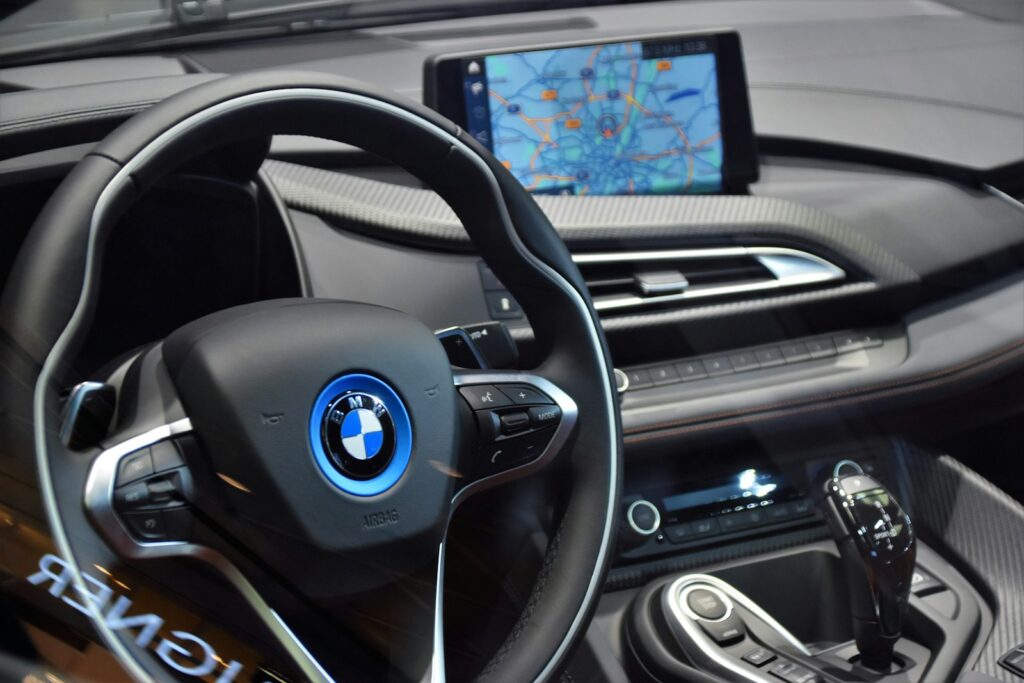
6. **Proven Technology & Reliability**For many consumers, the decision to switch to a hybrid is bolstered by the knowledge that they are investing in a technology with a long and robust track record. Hybrid cars have been on public roads for over two decades, allowing them to establish a well-deserved reputation for consistent reliability and dependable performance, a crucial factor for any vehicle purchase.
Models such as the iconic Toyota Prius stand as a testament to this longevity and reliability. The Prius paved the way as the first mass-produced hybrid vehicle in the late 1990s and has since become a symbol of how hybrids can consistently deliver dependable fuel efficiency and significantly lower emissions over many years of service. Its extensive production run means that the technology has been refined and proven, offering consumers confidence in its safety and functionality.
Concerns about the lifespan of hybrid batteries, a common misconception, are largely put to rest by the industry’s advancements. Most automakers now offer generous warranties on hybrid batteries, typically ranging between 8 and 10 years, reflecting increased durability and efficiency thanks to continuous technological improvements. These advancements ensure that the core components of hybrid vehicles are built to last.
The long history and widespread adoption of hybrid technology also contribute to strong resale values compared to some newer and less established EV technologies. This proven track record, combined with continuous innovation, means that drivers can trust in the maturity and dependability of hybrid systems, making them a sensible and secure investment in today’s automotive market.
Read more about: Steer Clear: 12 SUVs That Will Drain Your Wallet with Costly Maintenance and Reliability Nightmares

7. **Transitional Technology for Consumers**Hybrid vehicles are increasingly recognized as the ideal stepping stone for consumers looking to embrace electrification without immediately committing to a fully electric vehicle. In 2025, they serve as a perfect bridge, offering a familiar yet significantly more eco-friendly alternative to traditional combustion engines and easing the transition into new automotive technologies.
Analysts from S&P Global Mobility suggest that buyers are opting for hybrids precisely because they offer a convenient entry point into the market for electrified vehicles. This approach allows drivers to experience the benefits of electric propulsion—such as reduced fuel consumption and quieter operation—while retaining the security and familiarity of a gasoline engine for longer journeys or when charging infrastructure is uncertain.
Michelle Krebs of Cox Automotive notes that many people still harbor “trepidation about range anxiety and charging… with EVs,” and consequently, “they see hybrids as a stepping stone.” This perspective highlights the hybrid’s crucial role in demystifying electric vehicle concepts and allowing drivers to adapt to features like regenerative braking and electric-only driving modes gradually, without the pressure of full commitment.
Randy Parker, CEO of Hyundai Motor America, echoes this sentiment, stating that the appeal of hybrids can effectively reassure “EV-curious and cautious customers” that electrification is a viable and beneficial path forward. Hybrids provide a practical solution that combines fuel efficiency with lower emissions, allowing drivers to familiarize themselves with electric components and operations at their own pace, effectively paving the way for a smoother, more confident shift towards full electrification in the future.
Read more about: A Car Expert’s Deep Dive: 10 Hybrid Vehicle Innovations Worth Your Investment and Why They Drive the Future
8. **Dominance in the Market and Growing Consumer Demand**While the spotlight often shines on electric vehicles, hybrids have quietly, yet emphatically, asserted their dominance in the automotive market, capturing a significant and expanding share. Data from S&P Global Mobility clearly illustrates this trend, showing that hybrids and plug-in hybrids (PHEVs) have accounted for over 10 percent of the car market in recent months. This substantial presence underscores a broader shift in consumer preferences, driven by a compelling blend of practicality and sustainability.
This isn’t merely a fleeting trend; it reflects a deep-seated consumer demand for vehicles that effectively balance environmental responsibility with economic prudence. According to a recent Deloitte survey, a remarkable 64% of global consumers are actively considering hybrid or electric vehicles for their next purchase, signaling a persistent interest in greener transportation. Hybrids specifically appeal to those seeking reduced carbon emissions without the higher upfront costs often associated with full EVs, or the anxieties linked to charging infrastructure.
The loyalty of hybrid owners further reinforces this market strength. S&P Global Mobility data reveals that 40.1 percent of hybrid drivers who changed cars in August swapped into another hybrid, a notable increase from approximately 28 percent in the same month of 2022. This demonstrates a strong affinity for the technology’s benefits and reliability. Additionally, fleet buyers have played a crucial role in the sales success of hybrids and PHEVs, drawn by reduced fuel costs, positive sustainability impacts, and competitive pricing.
Beyond the raw numbers, the perception of hybrids has undergone a dramatic transformation. Gone is the “nerdy” image of the early 2000s; today’s hybrids are celebrated for their sleek styling, impressive fuel economy, and enhanced power. Jeff Buchanan, vice president of vehicle marketing and communications at Toyota, notes that the newest Prius model, for example, has garnered praise for its “unbelievable” styling and performance, attracting a broader and more diverse demographic of drivers who value both aesthetics and efficiency.
Read more about: Elon Musk’s $1 Billion Bet: How a CEO’s Bold Stock Purchase Erased Tesla’s 2025 Losses and Ignited a Bullish Revival
9. **Quieter Performance and Enhanced Driving Experience**For many drivers, the serene quietness of a hybrid vehicle offers a welcome respite from the constant drone of a traditional gasoline engine, fundamentally enhancing the driving experience. While some enthusiasts appreciate the roar of a combustion engine, a significant segment of motorists seeks a more peaceful cabin environment. Hybrids deliver this tranquility, making them an ideal choice for those who prioritize a calm and quiet journey.
This quieter performance is a direct result of the integrated electric motor. The motor significantly reduces the time the internal combustion engine operates, especially in situations where it would traditionally be most active. In slow-moving city traffic, for instance, the gas engine frequently switches off, allowing the nearly noiseless electric motor to propel the vehicle. This seamless transition provides a remarkably smooth and hushed ride, contributing to reduced driver fatigue and a more enjoyable commute.
Beyond mere quietness, modern hybrids also offer an enhanced driving experience through their advanced engineering and performance capabilities. Automakers are increasingly leveraging hybrid technology not just for efficiency, but to boost acceleration and overall driving dynamics. For example, sports car manufacturers like McLaren offer hybrid models such as the Artura Spider, which combines a twin-turbocharged V6 with an E-motor to deliver 691 horsepower and “razor-sharp throttle response,” achieving 0-60 mph in a blistering 3 seconds.
Similarly, the Corvette E-Ray, the first electrified Corvette, uses its electric motor to add 60 hp and 125 lb-ft of torque, resulting in a combined 655 hp and a 0-60 mph time of 2.5 seconds. This demonstrates how hybrid systems can fill in power before the gas engine fully engages, offering exhilarating performance without sacrificing the thrill. These advancements prove that hybrids are no longer just about fuel economy; they offer a sophisticated and engaging driving experience that appeals to a wide spectrum of consumers.
Read more about: 12 New Cars Named ‘Best Buys’ for 2025: An Expert Guide for Savvy Shoppers

10. **PHEVs: Bridging the Gap with Electric-Only Range**Within the broader hybrid category, plug-in hybrids (PHEVs) represent a crucial stepping stone towards full electrification, offering a unique capability that directly addresses many consumers’ desire for emission-free driving without the constraints of a purely electric vehicle. Unlike standard hybrids, PHEVs feature larger batteries that can be recharged by plugging into an external power source, granting them a substantial all-electric driving range before the gasoline engine ever needs to engage.
This distinct advantage means that many PHEV owners can complete their daily commutes and short trips using only electric power. For instance, the Toyota Prius Prime can travel up to 45 miles on electricity alone, and the Toyota RAV4 Prime extends this to 42 miles. For individuals with short commutes and the ability to charge their vehicle overnight, a PHEV can effectively provide week-long, gasoline-free transportation, significantly reducing daily fuel consumption and operating costs.
When operating in their all-electric mode, PHEVs achieve zero tailpipe emissions. This offers a tangible, immediate environmental benefit for drivers who prioritize clean air and reduced carbon footprints. If a PHEV is primarily used for short distances within its electric range, it delivers mostly emission-free performance, making it an excellent choice for eco-conscious individuals who wish to minimize their environmental impact in urban or suburban settings.
The beauty of the PHEV design lies in its inherent flexibility. Should a driver need to travel farther than the car’s all-electric range allows, the vehicle seamlessly switches to its gasoline engine, ensuring that journeys are never cut short by a depleted battery or a lack of charging infrastructure. This dual-power system effectively eliminates range anxiety, providing the peace of mind that comes with traditional refueling while still allowing drivers to reap the significant benefits of electric propulsion for most of their day-to-day driving.

11. **Resilience During Power Outages and Natural Disasters**In an increasingly unpredictable world, the ability of hybrid vehicles to maintain functionality during emergencies, such as power outages or natural disasters, stands out as a critical and often overlooked advantage. Unlike fully electric vehicles, which are entirely reliant on a functioning power grid and charging infrastructure, hybrids offer a vital layer of independence and reliability, providing crucial peace of mind when it matters most.
This unique resilience was highlighted during events like the 2025 Los Angeles wildfires, where evacuation orders underscored the limitations of sole reliance on electric charging stations. As one LA resident candidly noted after recent fires, “I wouldn’t want to evacuate in an EV.” In such scenarios, the ability to refuel at any conventional gas station—independent of electrical grids that may be compromised or shut down—becomes an invaluable asset, ensuring mobility when other options are unavailable.
With a full gas tank, hybrid vehicles can offer 300 or more miles of range, providing ample capability for evacuation, travel to safety, or simply maintaining essential transportation during extended grid disruptions. This blend of power sources means that drivers are not solely dependent on a single form of energy, granting them flexibility and security in crisis situations. The hybrid’s dual system ensures that even if one energy source is compromised, the other can take over, proving their mettle as truly dependable vehicles in challenging circumstances.
Read more about: Buyer’s Remorse: Unpacking the 15 Major Letdowns Driving EV Owners Back to Gas Cars
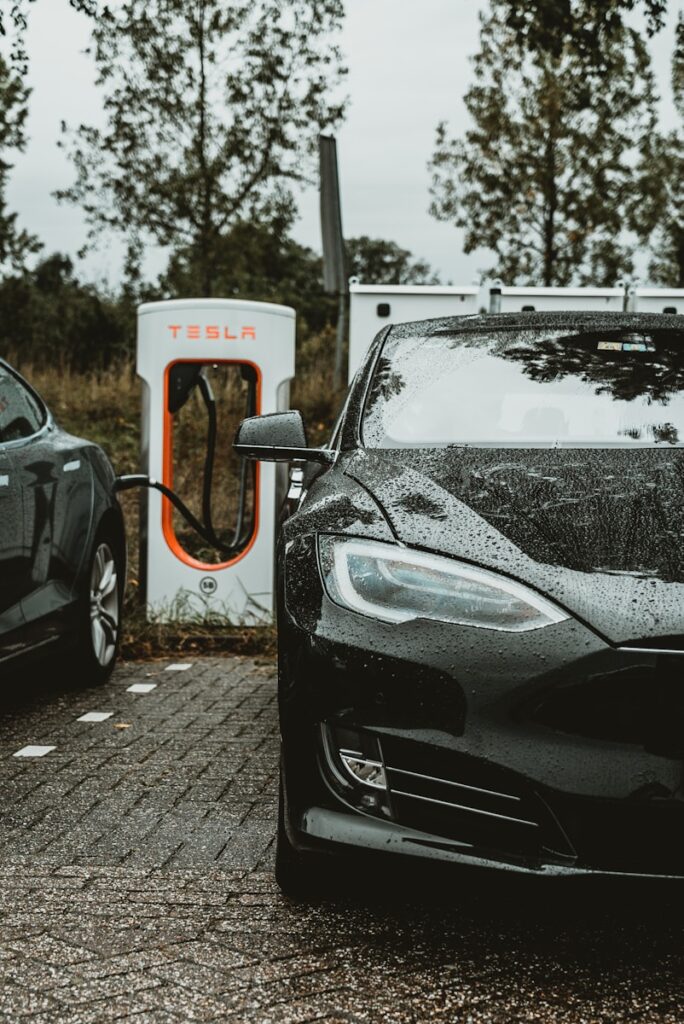
12. **Lower Environmental Manufacturing Impact**While electric vehicles are lauded for their zero tailpipe emissions, the environmental impact of vehicle manufacturing, particularly regarding battery production, is a crucial consideration for the overall lifecycle footprint. In this regard, hybrid cars typically present a notable advantage, contributing to a lower initial environmental burden compared to their fully electric counterparts.
The primary reason for this reduced impact stems from the size of their battery packs. Hybrid vehicles generally incorporate smaller batteries than full electric vehicles, which require fewer raw materials and less energy to produce. The extraction and processing of materials like lithium, cobalt, and nickel, along with the energy-intensive manufacturing processes, contribute significantly to a vehicle’s initial carbon footprint. Smaller batteries in hybrids inherently lead to less environmental strain during this critical production phase.
This difference means that hybrids start out with a comparatively lower “manufacturing emissions debt.” Essentially, the energy and resources expended to build a hybrid vehicle, particularly its battery components, are less substantial than for a pure EV. When considering the full vehicle lifecycle—from manufacturing to disposal—this initial advantage positions hybrids as a greener option, especially in regions where the electricity grids powering manufacturing plants may still heavily rely on fossil fuels.
Read more about: Elon Musk’s $1 Billion Bet: How a CEO’s Bold Stock Purchase Erased Tesla’s 2025 Losses and Ignited a Bullish Revival

13. **Less Strain on Power Grid Infrastructure**As the automotive industry continues its pivot towards electrification, the potential strain on existing power grid infrastructure has become an increasingly pertinent concern. The widespread adoption of fully electric vehicles naturally leads to a significant increase in electricity demand, necessitating costly upgrades and meticulous planning to ensure the grid can handle the load reliably and affordably. Hybrid cars, however, offer a practical solution that mitigates this challenge.
Because hybrids do not rely exclusively on electricity for propulsion, they inherently place less burden on the power grid. They can seamlessly switch to their gasoline engine when needed, reducing their demand for electrical charging, especially during peak hours. This flexibility allows for a more distributed energy consumption pattern compared to the concentrated demands of a fully electric fleet, which could otherwise overwhelm local and regional power networks.
This capability makes hybrids a valuable component in a diversified energy strategy for transportation. By providing an alternative that can operate independently of the grid when necessary, hybrids help to smooth out the transition to an electrified future. They enable a gradual and more manageable increase in electricity demand, giving utility providers and policymakers more time to invest in and develop the necessary infrastructure upgrades, ultimately contributing to a more stable and resilient energy system for all.
Read more about: Don’t Waste Your Cash: Understanding EV Battery Longevity and Replacement Realities
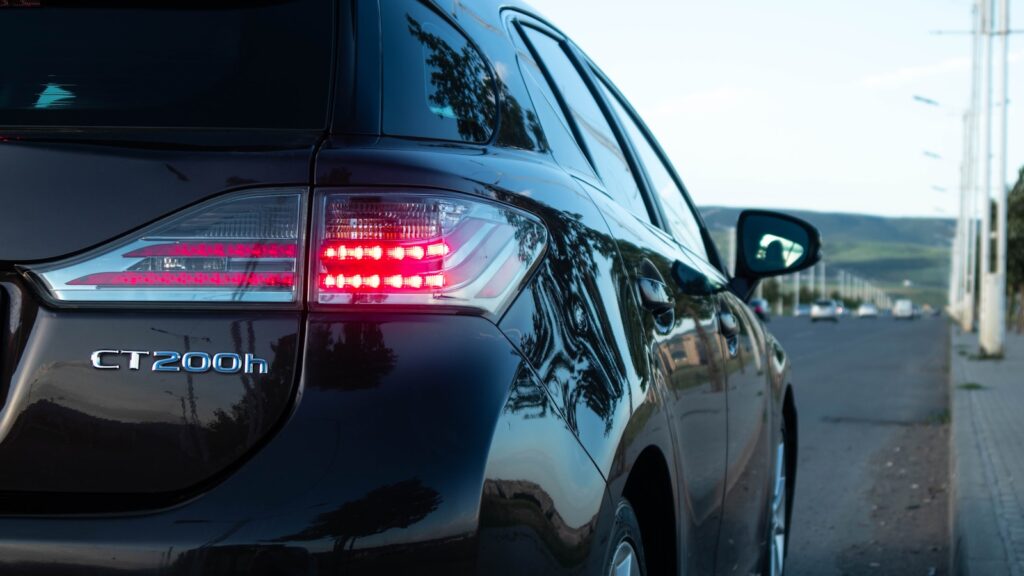
14. **The Future of Hybrid Vehicles: Emerging Innovations**The perception that hybrid technology is static or merely a temporary solution is quickly being dispelled by the rapid pace of innovation within the automotive industry. Far from being a stagnant field, hybrid systems are continuously being refined and enhanced, promising exciting possibilities that will further solidify their role in a sustainable transportation future.
Significant advancements are being made in battery technology, with lithium-ion systems evolving to be lighter, more efficient, and capable of holding a charge for longer durations. These improvements directly translate into even better fuel economy and extended electric-only ranges for hybrid vehicles. Beyond better batteries, automakers are actively exploring the integration of renewable energy sources, such as solar panels, directly onto hybrid vehicles. This could allow batteries to recharge passively, further reducing reliance on external power and cutting the carbon footprint.
Looking further ahead, revolutionary concepts like wireless in-road charging are being developed. This technology could enable hybrids—and indeed, all electric vehicles—to charge while in motion, effectively eliminating “range anxiety” altogether and making long-distance electric travel as seamless as refueling a gasoline car. Such innovations underscore a commitment to making electrified driving utterly effortless and ubiquitous.
Moreover, the horizon includes even more advanced hybrid configurations. Toyota, a pioneer in hybrid technology, is already venturing into hydrogen fuel cell hybrid models with vehicles like the Mirai. By combining hydrogen fuel cells with hybrid powertrains, these vehicles promise to achieve zero emissions while offering impressive range and performance, pushing the boundaries of what sustainable transportation can be and bringing us closer to a truly green future.
Read more about: Toyota’s Hypothetical ‘Water Engine’: Unpacking Hydrogen’s Disruptive Potential and the Future of Mobility Beyond EVs
In an era where sustainable transportation is more important than ever, hybrid vehicles shine as a versatile and practical choice for the environmentally conscious driver. By combining the benefits of both traditional and electric power, hybrids offer an efficient and responsible driving experience without sacrificing convenience or reliability. As we transition towards a greener future, hybrids provide a valuable bridge, easing the shift to full electrification while offering numerous benefits along the way. With their proven track record, practical advantages, and lower environmental impact, hybrid vehicles continue to be a wise investment for the modern driver. Don’t keep this valuable information to yourself! Share this article with your network and inspire others to make the switch to greener driving.

